Hello starshine!
It’s been a while since we’ve had good conditions up on Haleakala. Rain, fog, high clouds… you name it. Day after day, it seemed it wouldn’t stop. Nice to see the stars again, so pretty and clear!

It’s been a while since we’ve had good conditions up on Haleakala. Rain, fog, high clouds… you name it. Day after day, it seemed it wouldn’t stop. Nice to see the stars again, so pretty and clear!

In every LaserSETI instrument, there’s a large-capacity USB hard drive that we use to capture all the data coming from the two science cameras. Even with the biggest drives being made today, we can only store a month or two worth of data, but it’s an important staging area. The one in IFA2, however, had been dropping offline whenever we tried to read or write too much data to it.
So we shipped out a new drive to Doug, who’s local on Maui, and yesterday he drove the 3-hour round trip to the summit and replaced the drive. The weather had been uncooperative and we prefer not to operate in the rain, but he saw an opening and made a dash for it.
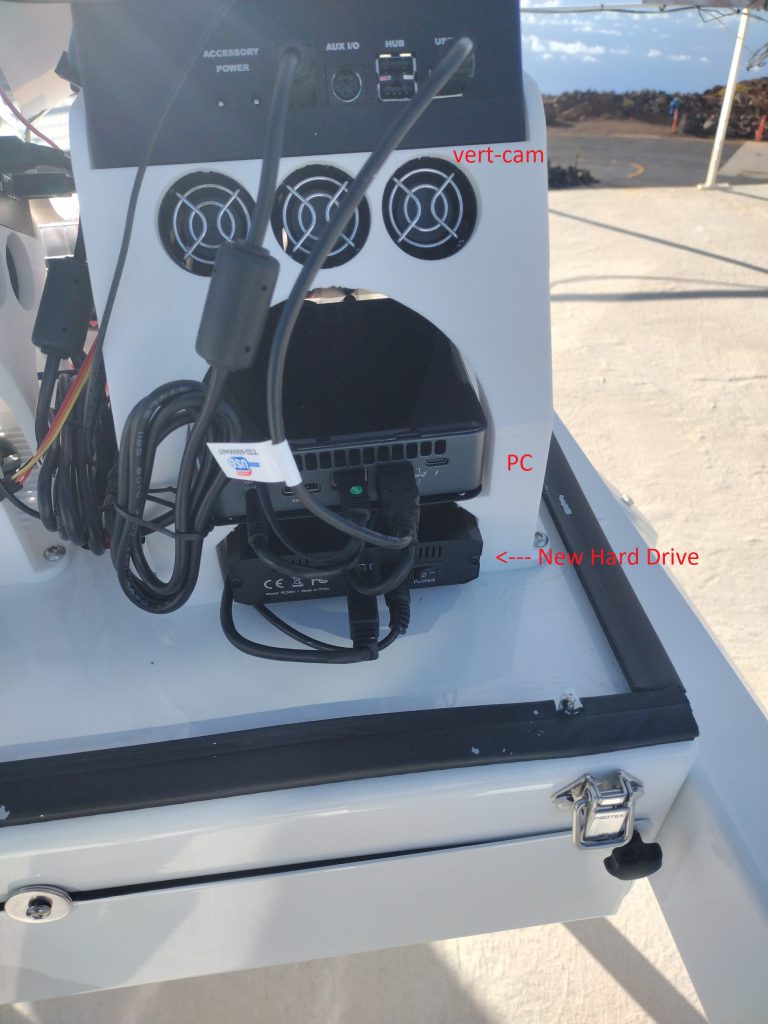
I don’t want to say “it’s fixed” too early or jinx it, but last night we made it through a full night of observing, streaming data at over 100 Mbps, while also backhauling the data to our datacenter in California… stressing the hard drive to the max, and everything went smoothly! Fingers crossed it stays happy for a good long while.
Turns out I did save a “before” movie of the RFO1 sunshade that wasn’t opening fully! It had been working great for a long time, but the real world is messy like that apparently. Clearly it was the humidity, cold temperatures, phase of the moon, and local unicorn population that was causing the friction.
Speaking of locals, Dan, did a phenomenal job this weekend and got the main computer within RFO2 back online! It’s been a long string of wacky issues, from the exact DC voltage it was receiving, to the firewall, to the unusual Vadj potentiometer on our DC transformer. The science cameras are still offline, but that’s probably a minor issue and we’ll hope to be observing again this week.
In related news, the hard drive on IFA2 has been flaky, so we’re also hoping to get that replaced on a similar timeline.
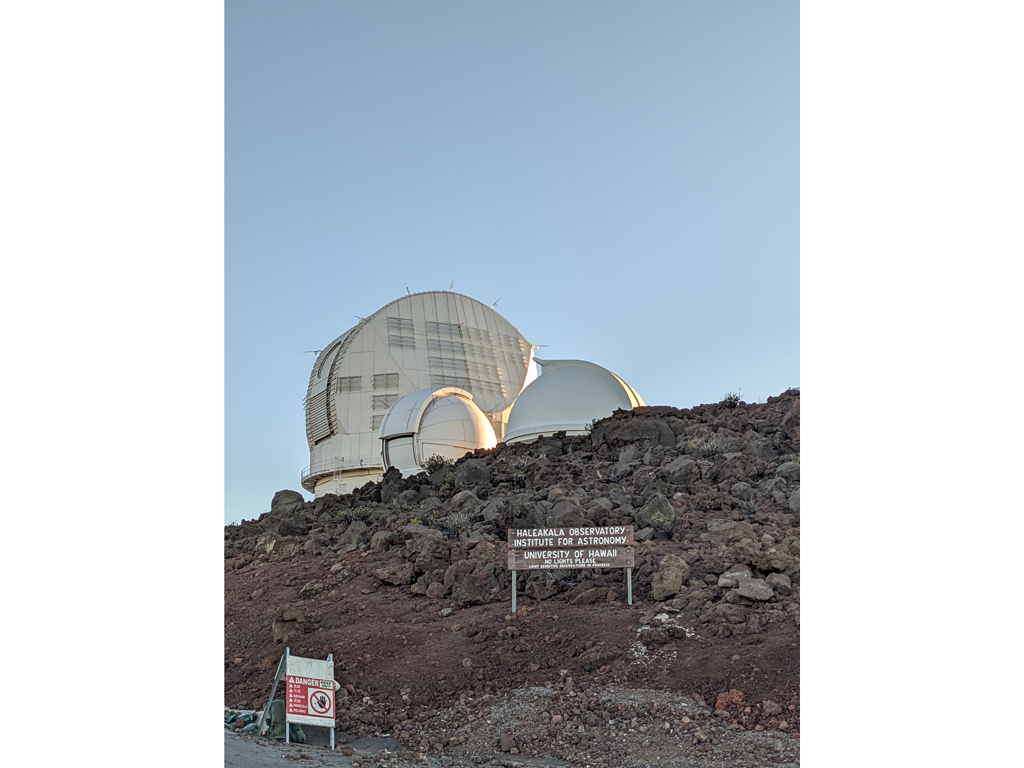
The road to the summit of Maui’s Haleakala Mountain has 32 switchbacks.
When Eliot Gillum, Director of LaserSETI, picked me up at the Maui airport, he jokingly asked me if I got car sick, and I laughed him off. But the ride up Maui’s tallest mountain is not to be taken lightly. It’s a gorgeous meander filled with blind turns and steep drop-offs. Gaggles of bikers laugh as they stream down the road, unbothered by the cars alongside them, and a few of the more serious athletes huff and puff their way up the 22-mile incline.
Eliot and I are making this trek from sea level to the 10,000-foot summit in a car with LaserSETI cameras in the trunk. LaserSETI is the first all-sky, all-the-time optical SETI project, which focuses on detecting laser pulses from outside the solar system. Distant advanced civilizations could use lasers for communication and spacecraft propulsion.
Last August, Eliot installed two LaserSETI instruments on the top of Haleakala. But by December, the science cameras had started going offline one by one. Each LaserSETI instrument consists of two wide-field, high-sensitivity cameras to capture images of the night sky, and when one of them goes out, observing is severely compromised. If you lose both, you’re out of business entirely. Fortunately, we’d come equipped with four replacements—two for each instrument—and swapping the malfunctioning cameras out for new ones is a quick process.
When we reach the top of the mountain, the visitor’s center is overflowing with people who have made the hike to watch the sunset. The sun is already dipping close to the horizon and shining orange against the clouds several thousand feet below. It’s beautiful, but we are running out of daylight for the camera swap.
Once we park the car, Eliot and I carry the equipment a few hundred more feet to the LaserSETI instruments, which rest on top of the “Air Glow” building. It’s a small structure made of cement and volcanic stone that holds equipment for several other instruments that share the roof with LaserSETI.
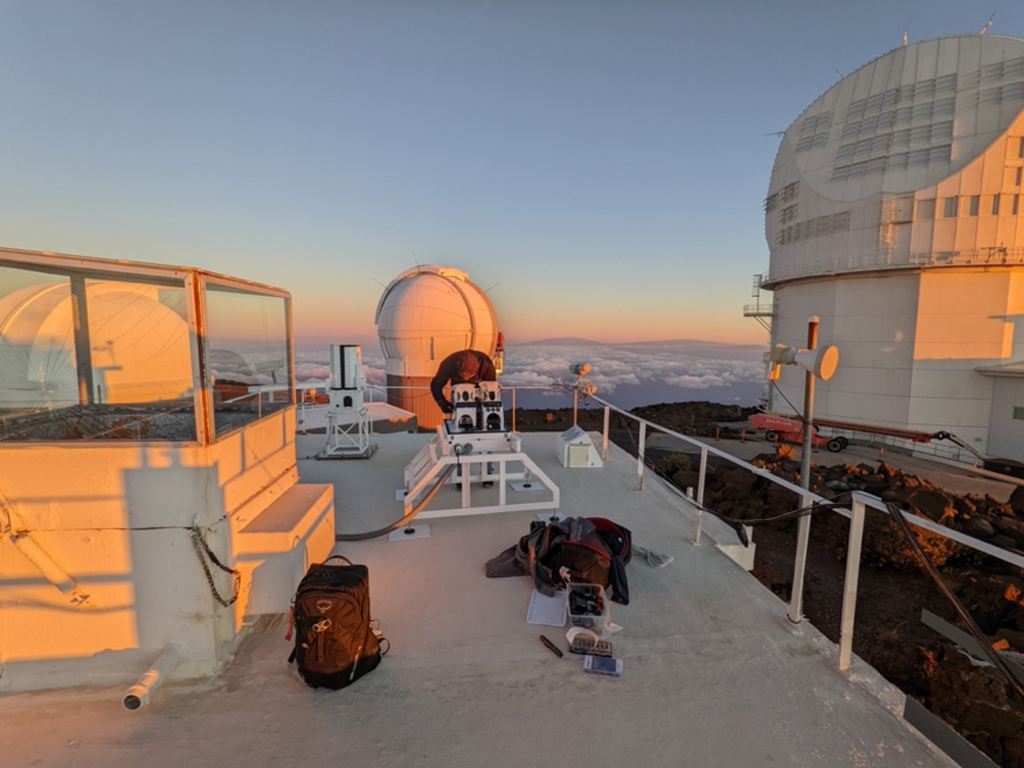
Since we’re so high up in the atmosphere, we put our coats on over our Aloha shirts before we get to work. Well, Eliot does most of the work. He opens the protective steel cover on top of the first instrument and disconnects the current cameras’ power supplies. Inside, we extract the components over each camera then delicately exchange the old ones for the new ones Eliot tested in his workshop back in California.
The sun has dipped below the horizon by the time we finish, and my fingers are pretty blue. Still, it will be another half an hour or so before it’s dark enough to test the cameras.
Turns out we don’t need that long.
Retreating inside the building into a spartan “Blast Room,” Eliot connects to the instrument’s computer. And it’s not detecting the cameras. Nothing has changed after the camera swap. And the two new cameras we just installed worked perfectly in California.
Eliot stares at his computer. I stare at the wall. Could something have happened to the cameras in transit? The box looked fine when we picked it up. Eliot heads back to the roof with his flashlight but finds nothing that could be causing the problem.
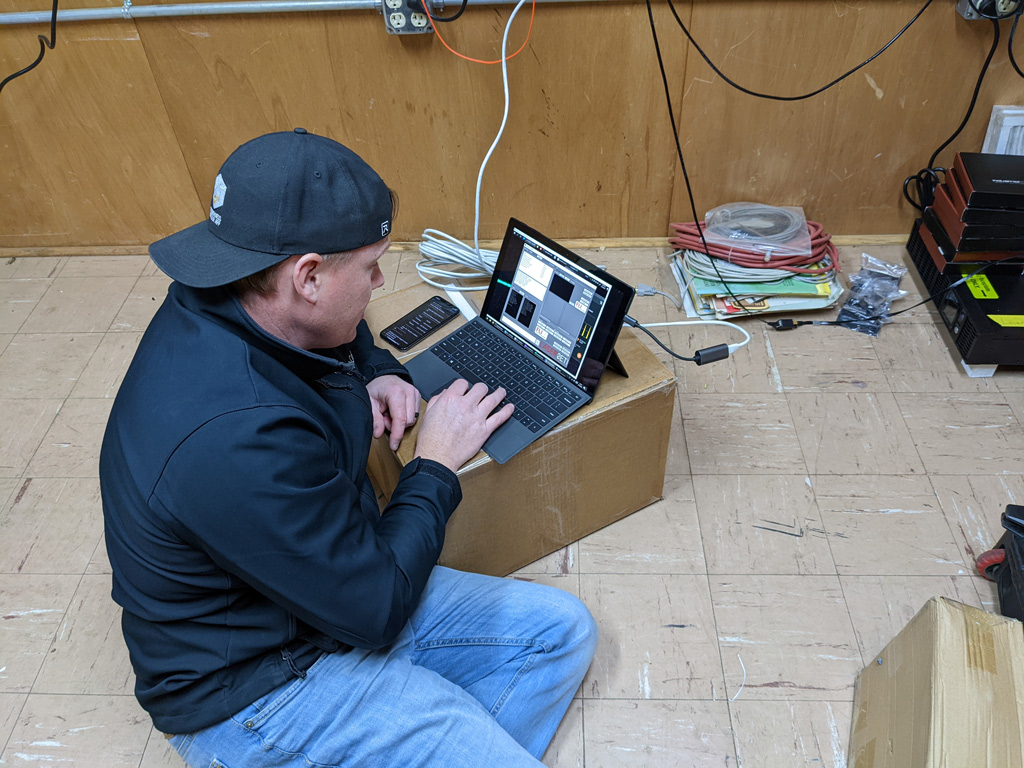
It wasn’t the cameras causing the instrument malfunctions after all.
The Raspberry Pi and PC are working, so power is flowing within the instrument. Our best guess is that there’s something wrong with the relays—electrically controlled switches that stream power to individual components within the instrument.
Whatever it is, we can’t figure it out right now. It’s dark and cold, making it hard to investigate and risks accidentally causing a new problem while fumbling around within the tight space. So, we close shop to get a good night’s sleep.
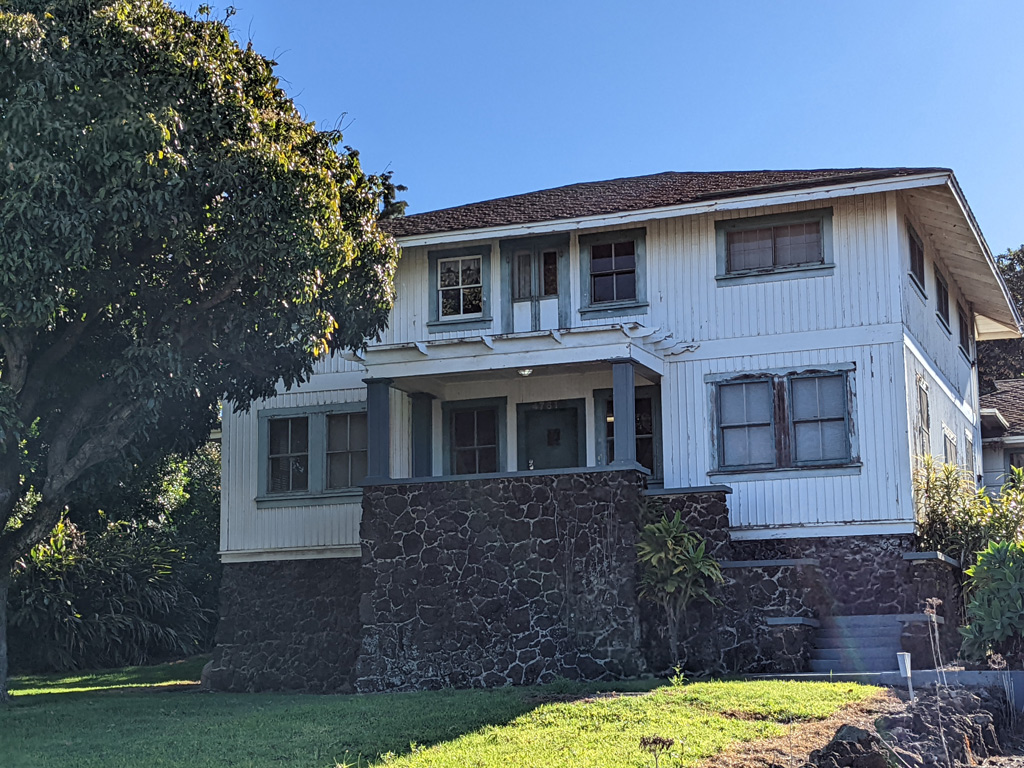
We head back to the car and down the perilous mountain road to the farmhouse, a historical building and base for many scientists at the University of Hawaii’s Institute for Astronomy. Our colleagues at IfA graciously allowed us to bunk at the house, where the Institute used to conduct classes and research.
Early the following day, fueled by iced coffee and the intrigue of our scientific mystery, we head to the Home Depot in Maui’s biggest city, Kahului, for a multimeter. This tool will measure the electricity in different instrument parts to find the issue.
We hit the road with a multimeter and our second round of coffee. It’s a gorgeous day on Maui, so the road is filled with bicyclists and runners. We even spot a few Nene, the Hawaiian goose, as we make our ascent.
We return to the Blast Room to drop off our gear and put on sunscreen before heading to the roof. Eliot gets to work testing the relays. These relays, a sort middleman, were added to enable the team to restart individual components remotely without shutting the entire instrument down.
Eliot tests the first connection, which sends power to the Raspberry Pi. There’s enough voltage going into the relay and enough coming out. So that’s not the issue.
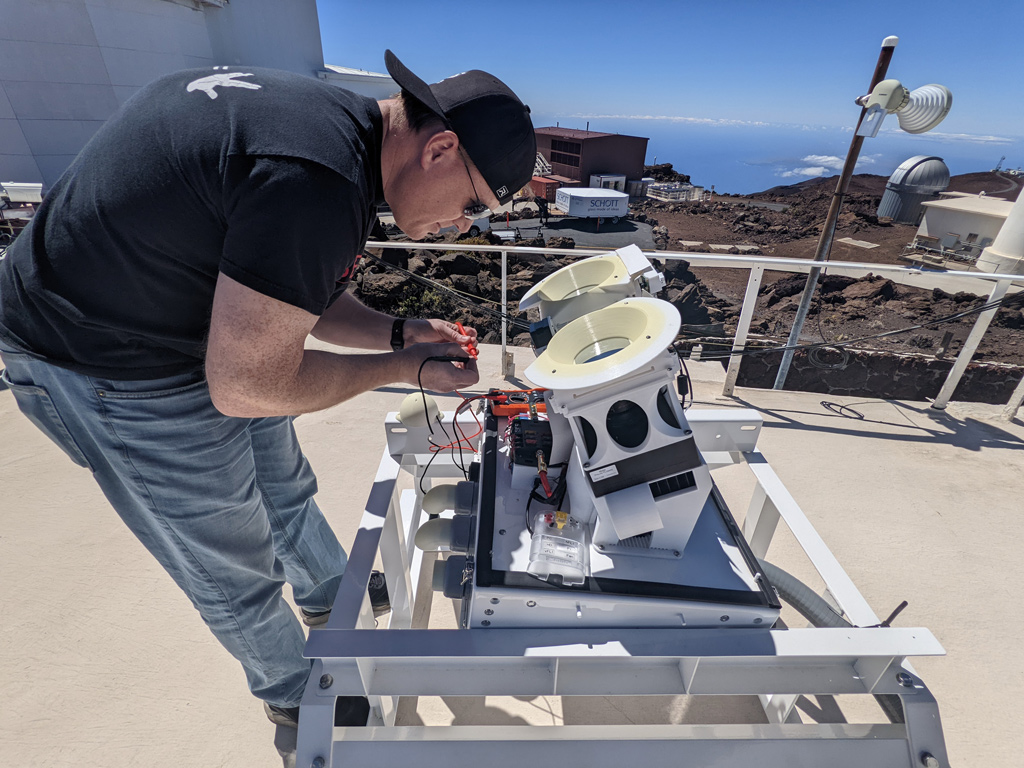
The second connection, which supplies power to the hard drive, is also good.
Then we get to the connection to the camera. Power goes into the relay, but the terminal leading out and into the camera shows virtually no voltage.
We’ve found our problem. We still don’t know why, but we now have proof that the relays have died, and that’s why the cameras turned off—they don’t have any power. Eliot is surprised since he saw some errors from the cameras that he’s never seen from their siblings in California. But the evidence is undeniable that the issue rests with the relays.
Eliot brought one spare relay board, but since this problem also occurred on the other instrument a few feet away, there was probably something wrong with this batch of relays from the manufacturer. At this point, it’s best to remove the relays from both instruments.
Armed with a screwdriver and pliers, Eliot disconnects the appropriate wire from the relay and connects it directly to the camera. He reinstalls the fuse, and we hear them power up. When we return to his computer, the cameras are ready to snap pictures. Voila!
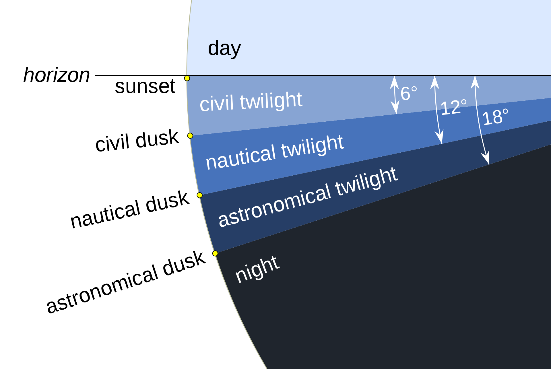
It’s now late afternoon, but there’s plenty of light left in the day to bypass the relay on the other instrument. Once that’s complete and the cameras in that setup are online, we retreat to the Blast Room to wait for astronomical twilight. Astronomical Twilight is when the sun is 12 degrees below the horizon, meaning there’s not much daylight bouncing around in the atmosphere, and scientists can begin observing faint, faraway space objects.
We’re waiting for this moment because we need to ensure the cameras in the first instrument, which we changed out last night, are focused. We aren’t concerned about the other instrument since we disconnected the relay and didn’t touch the cameras.
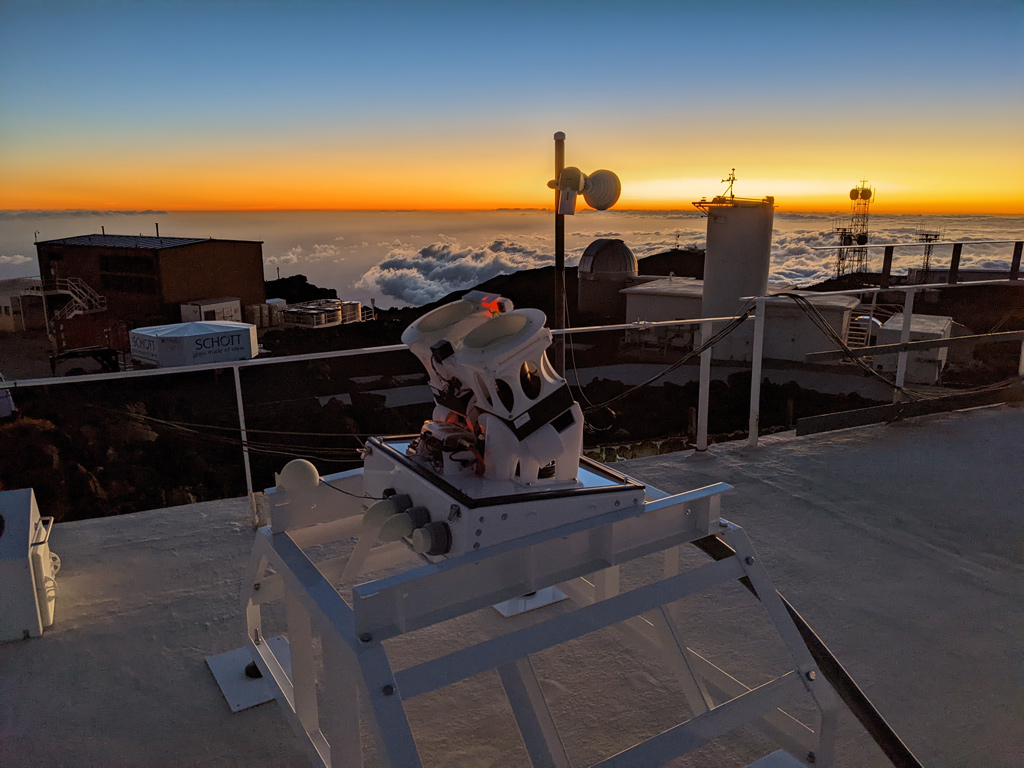
At 7:33 p.m., it’s go time. Eliot connects to the LaserSETI console and snaps a picture with the instrument with the new cameras. It takes about a minute for the images to load. Both cameras captured an image of a grey background with a speckling of white dots. The cameras happen to be perfectly focused already—a stroke of luck.
Since both instruments are in focus and actively recording the night sky, job well done! We pack up, take a moment to enjoy all the stars twinkling in the darkness, then head back to the car.
The LaserSETI team uses a design Eliot created in collaboration with many SETI Institute scientists to construct each LaserSETI instrument. But every time a problem crops up, it’s a brand-new challenge. But each bump in the road is a lesson the team will apply to new instruments as they’re built and deployed.
There are currently LaserSETI instruments on Haleakala in Maui and at the Robert Ferguson Observatory near Kenwood, California. The team has already begun work on the next ten instruments to place in other locations around the world. When these are up and running, LaserSETI will monitor the nighttime sky in roughly half of the western hemisphere and bring us closer to understanding whether another intelligent life in the universe exists.
Yesterday, Dan and I spent all day at Ferguson Observatory (RFO). We had a spot of rain to work around, but a number of things to get done and the trip was largely successful.
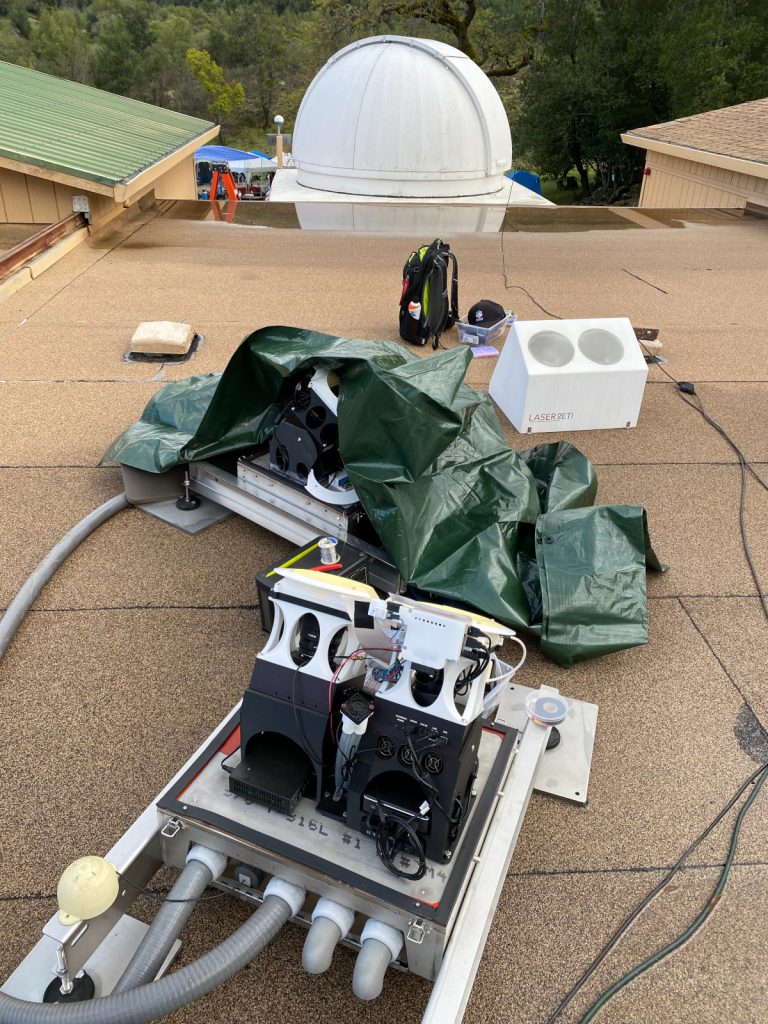
We dropped off the Drobo “SneakerNet” disk array that we use to exfiltrate data from RFO because the satellite link is too slow and expensive for that. LaserSETI analyzes data in real-time, but since we’re still in the early phases of our dual observation strategy, we’ve kept pretty much every pixel of observed photons thus far. This time was special because we had a failed disk (it’s a 5-disk array), but even after replacing that disk with two different spares, we concluded that one of the ports in the Drobo itself has failed.
We soldered the vert-cam’s power lead after having previously bypassed the relay in precariously fragile but 100% reliable manner *cough*cough*zip*tie*cough*.

If you’ve been watching the live pictures from the instruments recently, you would’ve seen evidence of RFO1’s sunshade not opening fully. I think it might be related to the humidity but, in any case, we carefully applied our special Teflon lubricant meant for polycarbonate, allowing it to out-gas as much as possible before reinstalling it, to prevent any potential chemical reactions on the optical surfaces. It’s now performing flawlessly! I wish I’d remembered to save a before-and-after movie since it records a movie of every open or close, but it currently overwrites the previous one. It’s on our To Do list to save a sample, for the curious as well as to document the daily operation of this critical component.
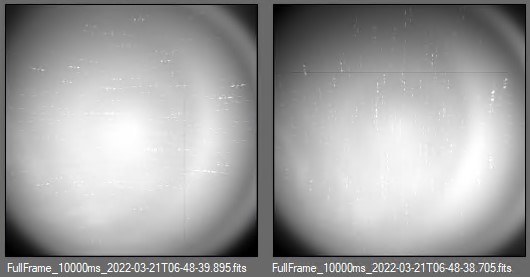
Since it was wet, it was a good chance to observe the seals, louvers, and other ingress protection mechanisms in action. I’m pleased to report that not a drop of water could be found inside the instrument!
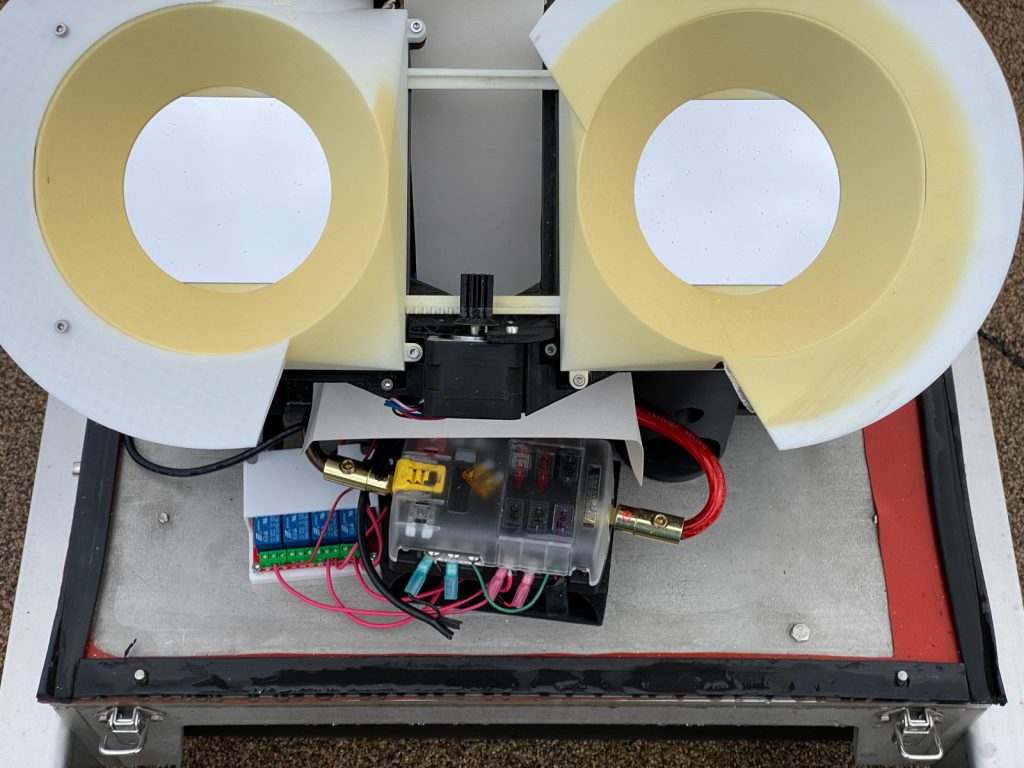
On RFO2, the problem had been with its external hard drive, mostly working whenever tested but failing fairly quickly under the heavy load of science observing. Having replaced the drive, enclosure, and cord, we replaced the PC itself. Long story short, Dan did a huge amount of work, figuring out that adding an internal drive didn’t work while on 12 volt DC power (but did work on 13 volt DC), that modern browsers refuse to speak the old version of SSL that our router uses, and that Windows Firewall is unreasonably insistent in blocking remote access. All of these issues took an inordinate amount of time to diagnose, particularly because they all happened simultaneously and hence had to peel the layers of failure and obstacle like an evil onion. Now that we’re pretty sure we have a complete diagnosis, we expect to have RFO2 back online within a week or so, since it will require a another trip–the 5th actually–on this issue.
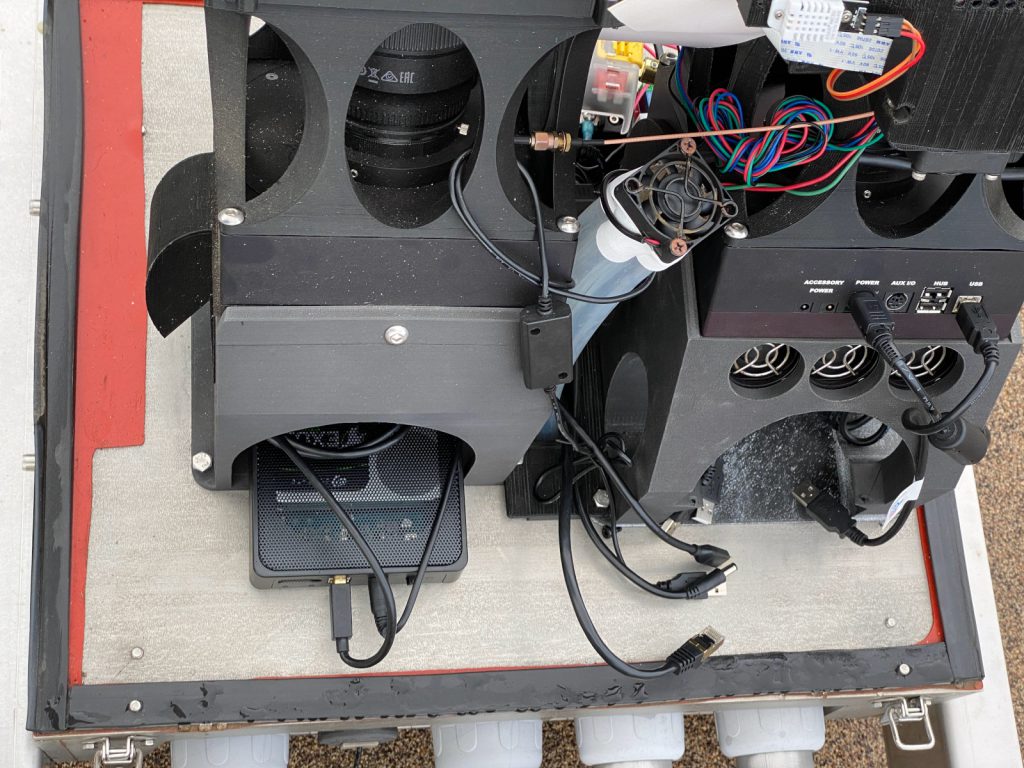
Jumping to Hawaii for a minute, after a surprising but successful visit last month to Haleakala, IFA1 has performed well and taken a lot of great data. Unfortunately, IFA2 has started exhibiting similar external hard drive issues to RFO2, so we’re making arrangements to try swapping out the disk and enclosure, as well as create some software backup procedures to allow some observing when this symptom appears, based on our learnings from trying to do so with RFO2.
For those of you who followed the Mars Exploration Rovers, I think you’ll understand why I feel like both RFO1 and IFA1 are like Opportunity, and RFO2 and IFA2 are like Spirit. After operating on Mars for more than a year, the NASA team noted that everything came easily to Opportunity, while Spirit had difficulty after difficulty. It’s especially eerie that Opportunity landed first, and the LaserSETI analogs are RFO1 and IFA1.
See you again soon!
Hello again, friends and supporters. It’s been far too long since I’ve sent an update. It’s been a challenging journey from the point we shipped off the instruments and, if I told you every twist and turn since then, this update would be so long that no one would read it! The short explanation is that I kept hoping there would be a good moment to tell the story without leaving things in the air, but things were just too crazy and busy. Please accept my apologies and promise to do to better.
What I do have for you is an update in multiple parts. The first two parts were written 7 weeks ago, and the last part will catch you up from there. Thanks for bearing with me and I hope you enjoy hearing all about it!
I’m writing this on the plane back from Hawaii, after a 48-hour trip where I spent the majority of my waking hours on the summit of Haleakala.
It gives me great pleasure to say that both instruments were installed “successfully” in August, and (I believe) are now working fully. The summit is a stunningly beautiful place, both objectively as well as for astronomy. So, in addition to searching for Near Earth Objects (NEOs) with PAN-STARRS and studying the solar dynamics as never before with DKIST, the Haleakala Observatory will also be searching for technosignatures with LaserSETI!
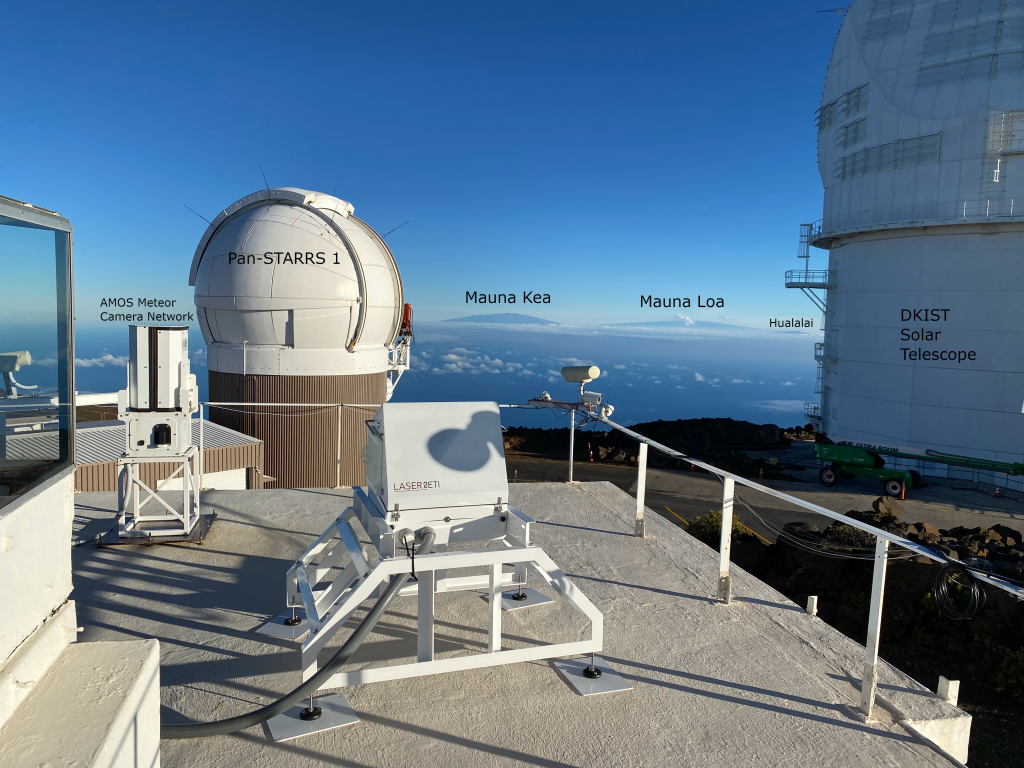
[Above: IFA2, the southeast-facing instrument, Below: IFA1, the north-facing instrument along with the Air Force’s satellite-tracking telescope is barely visible in the upper left corner]
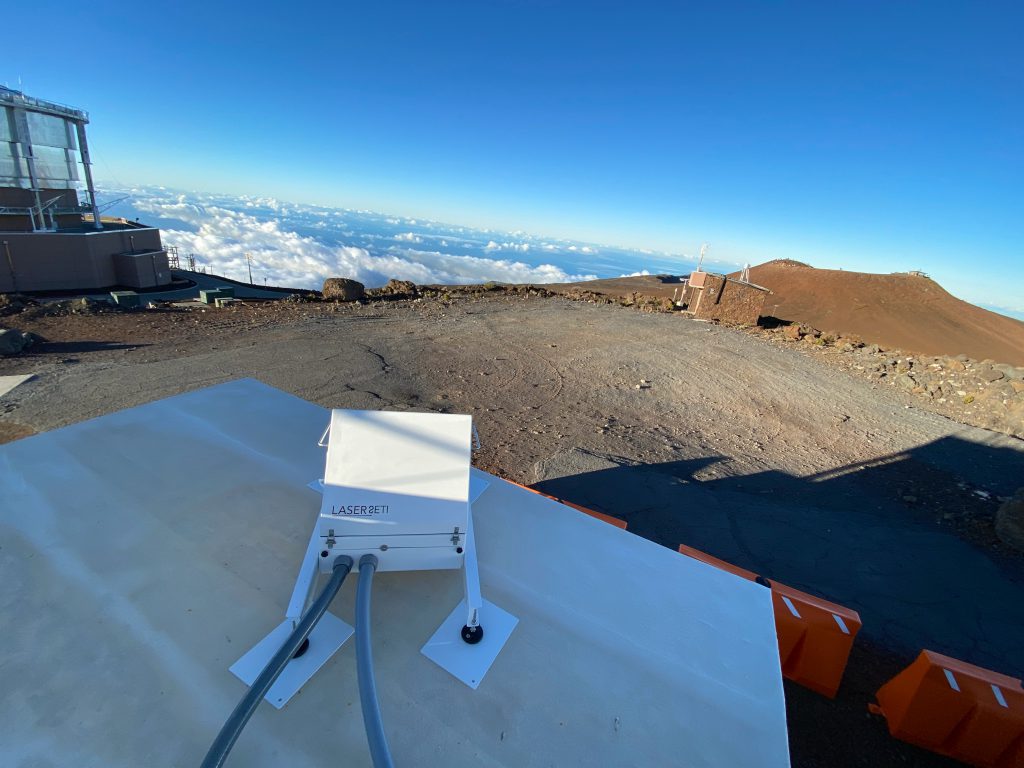
For reference, the instruments at Haleakala look at the same set of stars as the insturments at Ferguson (RFO) in Sonoma, CA.
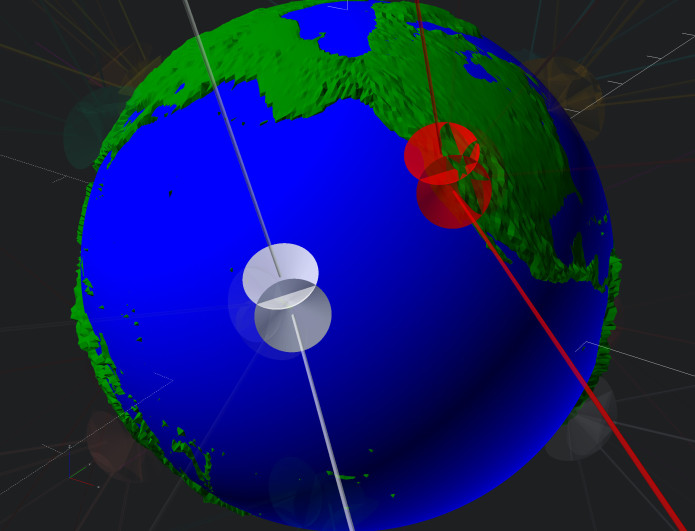

Knowing how scenic the summit is, we setup a camera to take a time lapse, and the battery almost lasted the whole time.
I’d especially like to thank the University of Hawaii’s Institute for Astronomy (IfA) staff, who’ve been very helpful to the project during these difficult pandemic times. Also, as you can see from the time lapse, the setup work was a team effort with the critical help of the SETI Institute’s own Assistant Director Steven Bourdow, as well as my son Jason. It really takes a village to make LaserSETI work, and that couldn’t have been more obvious in the past couple months.
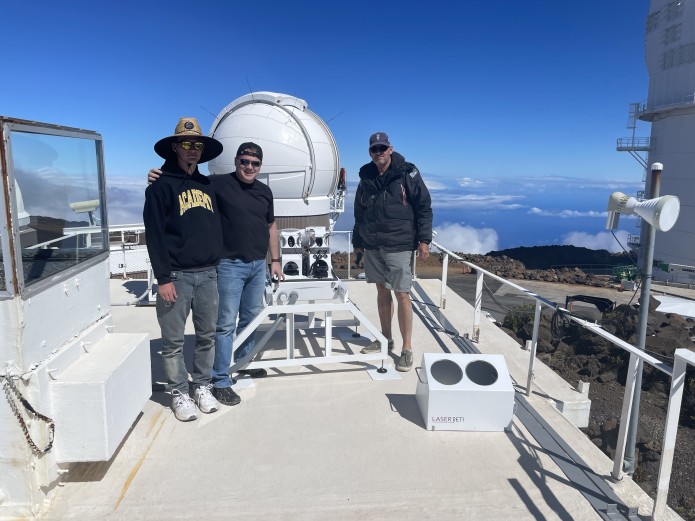
The second half of this update, which details the challenges of the installation, starts with the shipping company puncturing one of the two cases with a forklift, and unfortunately in a way that’s clearly unrelated to intentionally manipulating the case. I found out just before boarding the plane, and when I arrived, I was relieved that they didn’t damage the instruments. But they did skewer the 12V DC transformer that powers everything. “No problem,” I thought, we’ll just order a new one, and I’d purposely planned extra days into the trip precisely in case something went wrong beyond the array of spare parts I’d shipped with the instruments.
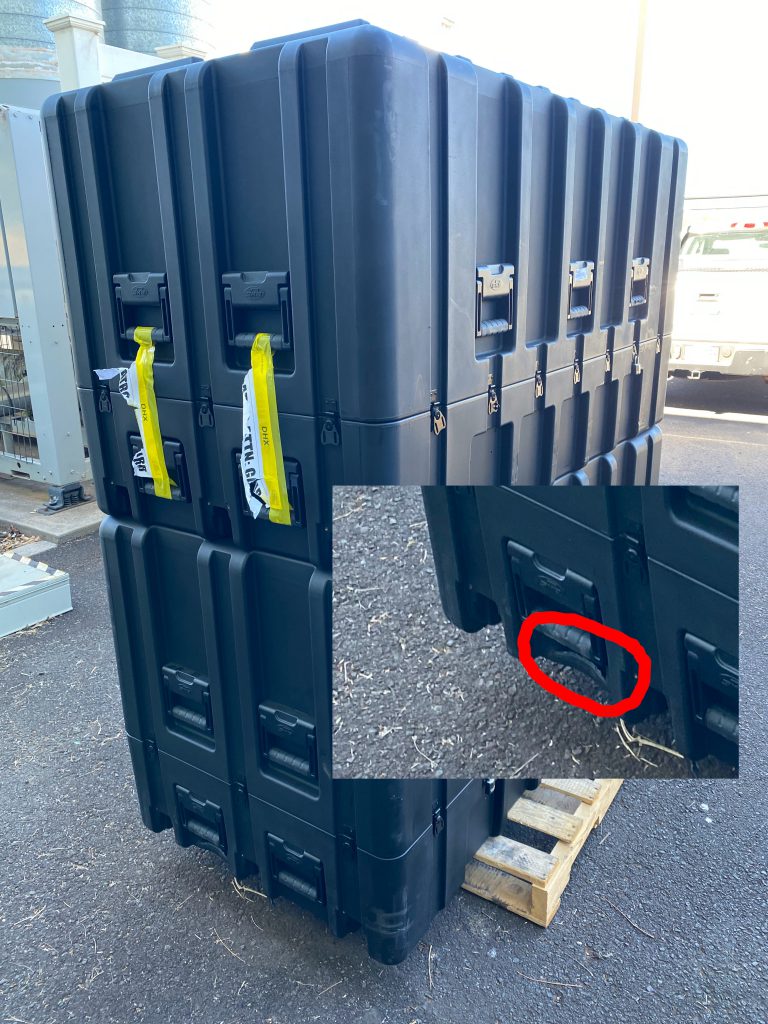

The day before I planned to leave Hawaii, after chasing all over East Maui Post Offices, the replacement arrived, and I pulled it out of the box to make sure it wasn’t damaged. I drove it up to the summit, installed it, and powered on our gear. But none of the six exhaust fans worked. “That’s weird, I thought, I tested those a dozen times. And all of them??” As I tried to repair them, fuses kept blowing but I could find nothing wrong with the wiring. A little voice told me to check the input voltage… and it was 24V, double what it should be! Suddenly, in my head, Han was yelling at Chewie “Turn it off! Turn it off!” and I ran to kill the power. The two transformers were identical except for a 12 vs a 24 in the model number. I didn’t notice and apparently neither did Amazon.
It was the end of our last full day, and there was nothing to do but go home. The state of every component in both instruments was in question, and nothing was on the network for me to connect remotely. As I mentioned before, the IfA team is great, so I shipped in a _new_ new transformer and, after carefully checking the model number, they swapped it in. We then did some networking magic to connect into the gear and make it remotely accessible. Finally, I could assess the state of the equipment.
Fortunately, the heart of the instrument, the science cameras passed a whole battery of tests, and the networking and Intel science computers checked out too. The raspberry pi is the central nervous system, with sensors and the motor to open and close the sunshade, which protects the camera shutters from the Sun during the day. One pi was wiggling the motor but not able to open the sunshade, the other pi was offline completely. If we had to be unlucky with this double disaster, at least they were inexpensive components, and also not the router which would’ve made the whole system inaccessible.
Meanwhile, we’re going through the claims process with the shipper who punctured the box to begin with (resolved painfully but satisfactorily) and Amazon (like the Energizer Bunny, it’s still going). We also built new raspberry pi’s, to prepare for complete replacement of the existing ones in both systems. This was more challenging since all our tools and spare parts were in crates still stuck on Maui due to the claims process then a scheduling incompatibility between the shipper and IfA.
And so, in the past 2 days, I swapped out the motor controller boards in both pi’s, focused all four science cameras, and dealt with a couple of other minor issues that cropped up. In addition, our shipping cases should be on their way back to CA, and a new one is being manufactured to replace the punctured one—since we don’t want contaminants or pests taking up residence in the new instruments during the case’s next voyage.
More good news and less-good news.
First, the less-good news. When I arrived home in October, the two IfA instruments were performing well. Then, occasionally two of the cameras would exhibit a strange, transient issue that was easy to clear. Then, it started happening more often and not clearing as easily. So I engaged the camera manufacturer to get their advice. Just after I did that, however, the two cameras—one in each of the two instruments, unfortunately—went completely offline, and no amount of Fonzie’s Magic Touch™ could coax them back online for further diagnosis, repair, or workarounds. Adding insult to injury, that’s when severe weather hit the Hawaiian Islands, causing blizzards and more at high altitude. The summit lost power for about 4 days and networking connectivity for 9. Apparently, they had to splice in 200 feet of new fiber a couple miles from the summit, in a spot that was a 3 hour hike to get to, and the first time they tried the equipment didn’t work due to the altitude!
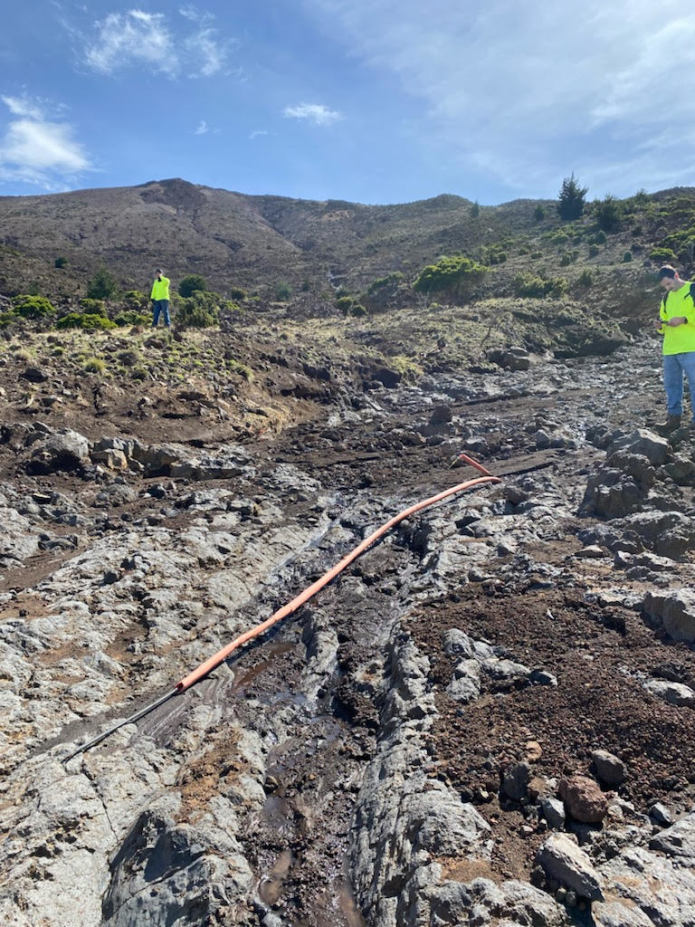
The instruments dutifully came back online earlier this week, with frost covering their windows but that cleared after another day or so. Yet still both troublesome cameras remain offline. At this point, I’m fairly certain we’ll have to use the two spare cameras we’d ordered for the next batch of 10 instruments to swap into the IfA instruments, then hope the camera company can repair the damaged two to replenish our supply of spares.
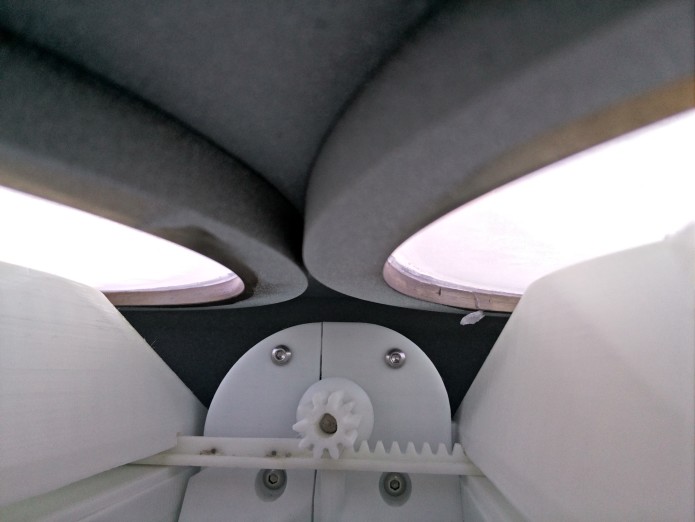
At the same time, RFO2 (the second instrument at Robert Ferguson Observatory) experienced a similar increasing failure pattern with the hard drive that the instrument writes the camera data to. For a long time, once every couple of months, the hard drive would go offline and require a little software Fonz’ing to get it back. Not ideal, but no big deal. Then, within the span of a couple weeks, it happened more often, then every time we started trying to take data, then anytime we accessed the drive at all. Figuring the most likely cause was the drive itself or the USB enclosure, I ordered replacements and made the 3-hour round trip to swap it in. It looked good at first, but then went straight back into its previous pattern. So I made the trip again, this time with a new USB cable and PC. I swapped in the cable, ran some tests, and everything looked good. Relieved that I didn’t have to perform the hardware and software surgery to swap in a new computer, I went home. That worked great for a couple days, but then it went back to stuck offline. To allow some data-gathering until we can head up there again, I’ve jury-rigged it to write its data to RFO1’s hard drive. The process is intensive enough that single hard drive can’t keep up if both instruments are capturing data, but something is better than nothing, even if just for a short while.
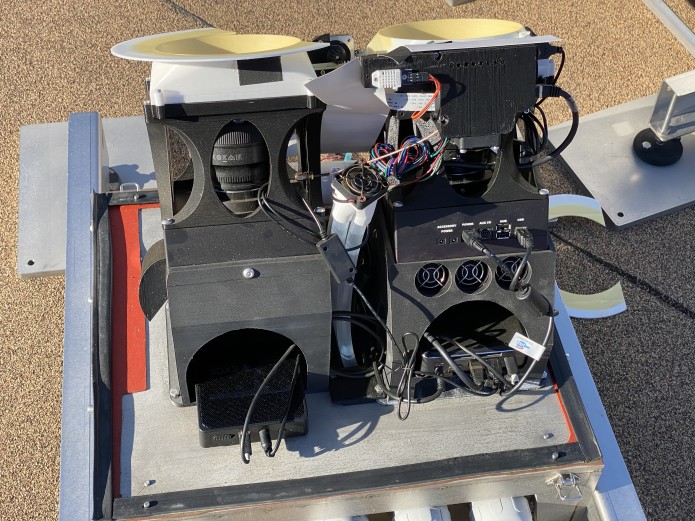
Besides the fact that RFO1 continues to chug along as the Opportunity Mars Rover to RFO2’s Spirit, there’s other good news. After months of claims, almost 100 emails back and work, issues and workarounds, ordering and coordinating, and over 5 weeks in transit (when the outbound journey took barely more than 1 week), on Friday we picked up the cases with our tools and spare parts, along with the replacement case for the punctured one. In addition to closing a long saga, it will be a lot easier to build new instruments and work on the ones at RFO with those! Here’s LaserSETI team member Dan, with our crates loaded up and the punctured one left with the shipper (which they required to settle the claim).

In closing, I just want to thank you all for your support and bearing with us through this difficult year. If we had a dollar for every time things were harder than they needed to be, we could fund the global observatory, but every time I also knew I was blessed to be pursuing this effort on behalf of all of you and that many others had difficulties far worse than anything we experienced.
We will have more news to share soon, but for now let’s just say: Happy holidays to you and yours, and best wishes from all of us at LaserSETI and the SETI Institute!
July 29, 2021
It’s been longer than I wanted since the last update, but I promised myself the next update would have real news to share, instead of trials, tribulations, and delays—and that day has finally come!
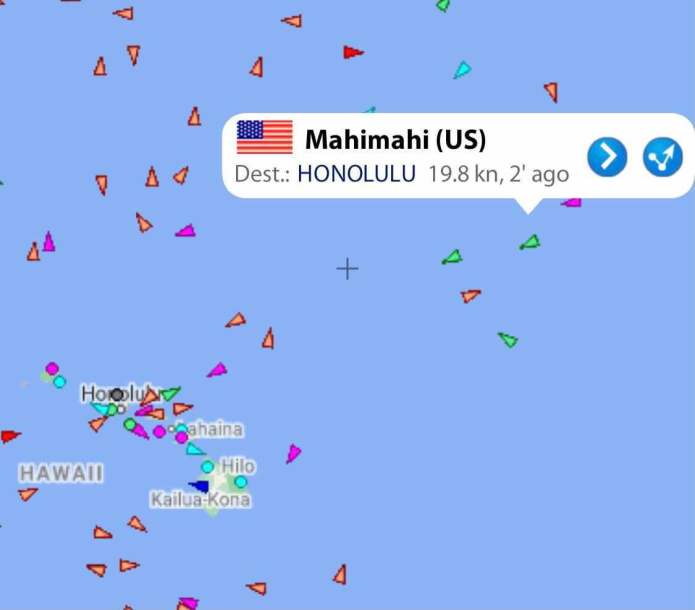
The LaserSETI instruments bound for the summit of Haleakala are on a boat and have land in sight! We have plane tickets, a rental car (!!!), and a date to begin installation. Our second observatory is coming together, and we’ll be able to start co-observing our two fields-of-view.
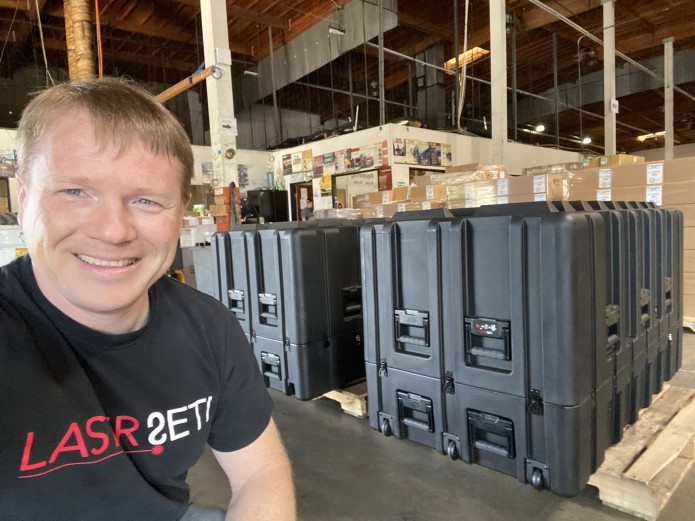
I was a little excited that the instruments were finally shipping out. I do own other shirts, for the record.

And here’s what’s inside each case: one instrument, half of the riser for the instrument that needs sit above ground level, non-instrument components like conduit, cable, and the DC transformer, as well as spare parts just in case. The little blue box is a “transport data logger” which records the forces experienced during shipment, for learning and insurance.
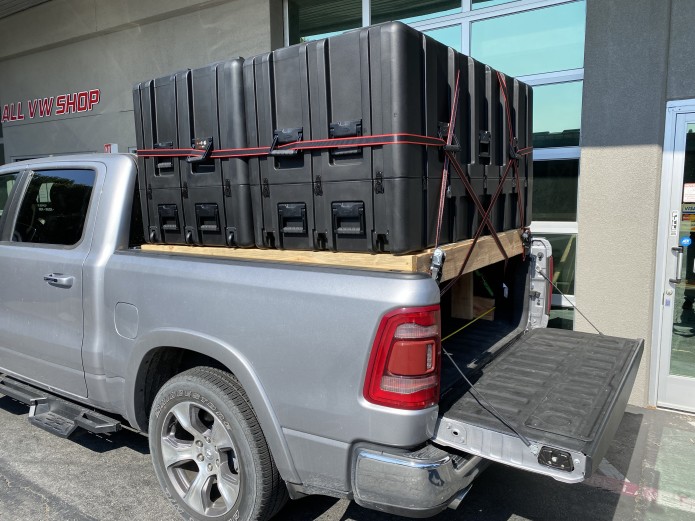
The cases were just a few inches too big for the truck bed so we built a platform on top. I can confidently say it was the most comfortable and secure ride of the instruments’ lives.
I don’t want to dwell on the negative but, since the instruments have been built and waiting for 10 months now, I think it’s important to account for the time. Unsurprisingly, the majority was due to COVID-related travel restrictions, both in Hawaii and then California. The remaining third, however, was difficulty in obtaining shipping cases. One surprise was that reusable cases were less than 50% more than one-time use crates which, since we have many more instruments to ship out around the world, will save thousands of dollars. It also means that, in the future, there’s one less external dependency to keep the project on track. The major cause here, however, was a vendor that was bad at communicating and worse at delivering. It’s no astronomy joke to say it was “night and day” once we were finally able to identify an alternative vendor and case product that suited our needs on a reasonable timeline. The value of people and companies who keep their word and deliver on-time just cannot be overstated!
The next update will certainly be soon, to share pictures and stories on the installation, and I’m confident we’ll get some stunning pictures from on top of that mountain! And stay tuned in case we have any surprises to announce!
October 22, 2020
It’s exciting times for LaserSETI! In this update we’ll talk about the state of the instruments, both in California and Hawaii, and deployment plans for installing the latter.
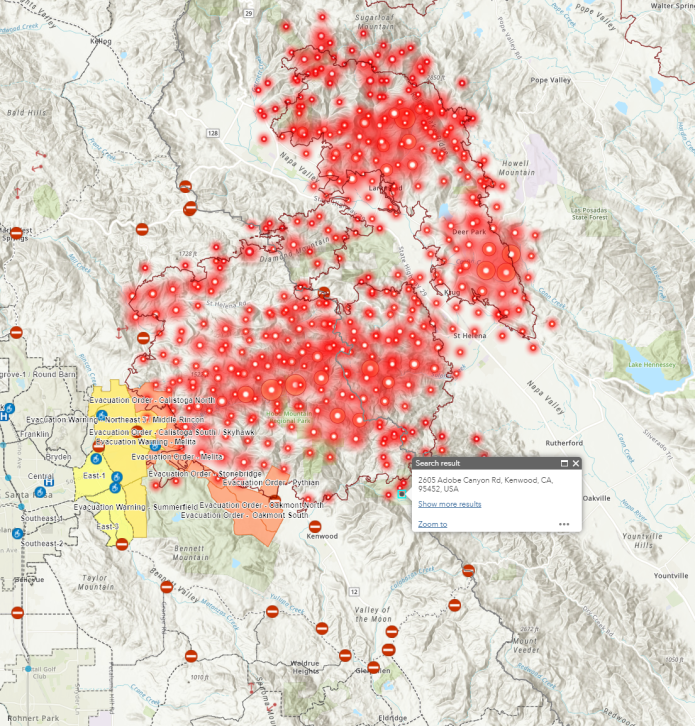
As probably many of you heard, the fire season this year in California was unprecedented. Those of us in the Bay Area will likely always remember the Day It Looked Like Mars, which was a little bit neat for those of us who’ve dreamt of living on the Red Planet, but mostly scary – a pretty good simulation of a nuclear winter, perhaps. The most recent set of fires, generally referred to as the Glass Fires, did actually enter Sugarloaf Ridge Park where Ferguson Observatory and our LaserSETI CA instruments reside. Fortunately, CalFire proactively protected the observatory and worked hard to keep the fires from pushing any further south into the park. We’ll continue to work closely with the great team at Ferguson to do everything we can to keep the observatory safe, and our hearts go out to all those affected by these catastrophes. It really hits home for us at the SETI Institute when one of our colleagues lost his home in the Lightning Complex fires in the Santa Cruz mountains.
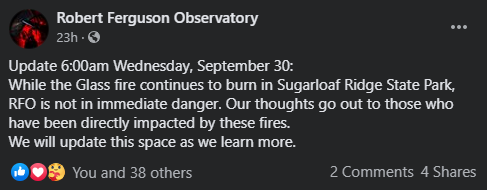
(You can follow Ferguson Observatory here)
The evacuation orders have lifted but Sugarloaf Ridge Park is still “closed for infrastructure repairs.” So, unfortunately, after a week of not being able to observe due to the smoke in the sky, we were then without power for over a week, and just got back on the sky two nights ago. But just last night, as a precautionary measure, I stopped the observing process and secured the instruments, because Pacific Gas & Electric started forecasting a Public Safety Power Shutoff (PSPS) in our area. When weather deemed hazardous to their infrastructure is forecasted, they shut power off to avoid starting more fires. This isn’t the first time in the past year that we’ve had extended observing interference, but I think it’s now the longest, most complicated, and dramatic!
As soon as possible, I’ll be heading up to check on the instruments and do some upgrades. I never saw any significant soot accumulate on the enclosure windows, but it’s a good time to double check and replace the air filters. I’ve got new light baffles which should have greater longevity and will reduce the pressure on the sunshade opening. And most importantly, I’ve got new LaserSETI decals to put on the covers, since we had to remove the old ones when we applied the white thermal paint.
Speaking of which, I thought everyone would enjoy seeing the newly built and tested instruments. It’s all white but the covers are white thermal paint to help keep the instruments cool, while the rest is simply powder coated so the instrument will blend in in situ. You can see the piano hinge of the new wiring box design which not only saves money, but makes it much easier to access that space. My favorite improvement, though, are the handles on the cover. That component weighs about 60 lbs. so now it’s much easier to remove and put back on! You can also see the new relays underneath the power distro box in the front, which now allow both computers to be rebooted by the other, in addition to the original capability of rebooting the cameras. If you want to learn more about the components and design, let us know and we can have a Facebook Live or dedicated update.
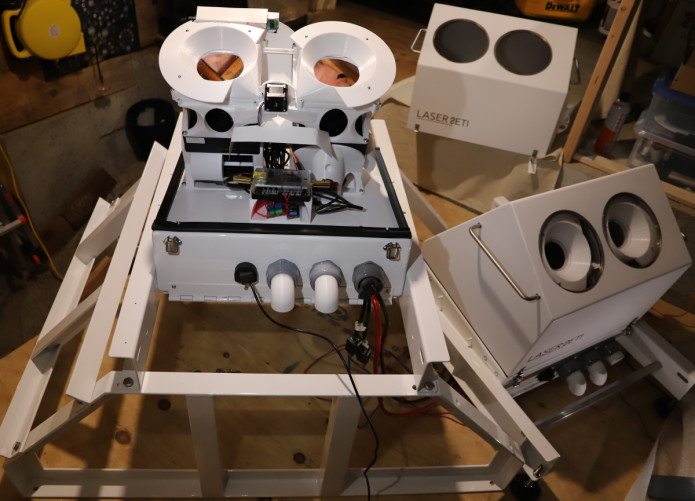
Long story short, the instruments here in California have taught us a lot on how the designs could be improved. The differences may not be immediately apparent to the untrained eye—which I suppose is a positive sign that our designs were pretty good to start with—but there are over two dozen separate improvements to the enclosure and supporting electronics. All of these have been incorporated into the two new instruments soon heading for Hawaii, and as many as possible retrofitted on the instruments installed at Ferguson. There’s not a lot we can do about the wildfires, high winds, power outages, and pandemics that slowed progress and interfere with observing, but we’ll keep doing whatever we can to be prepared and adjusting as necessary!
And finally, the big news is we’re finally able to announce our location in Hawaii. The University of Hawaii’s Institute for Astronomy has agreed to host the two instruments shown above on the summit of Haleakala on the island of Maui! The site is at 10,000 feet above sea level (3000m) and is absolutely outstanding.
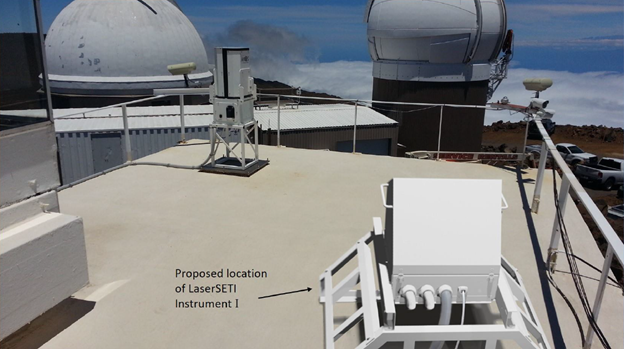
As you can see on this rendering, we created for the state Site Plan Approval application, our neighbors will be PANSTARRS 1 and 2, another awesome project focused on transients! And if you were wondering why that truss was underneath one of the instruments in the previous picture, now you know: so we can see over the railing. It was no simple matter, however, for it to be able to tolerate winds over 130 mph! The other instrument doesn’t need that, as you can see from the rendering below.
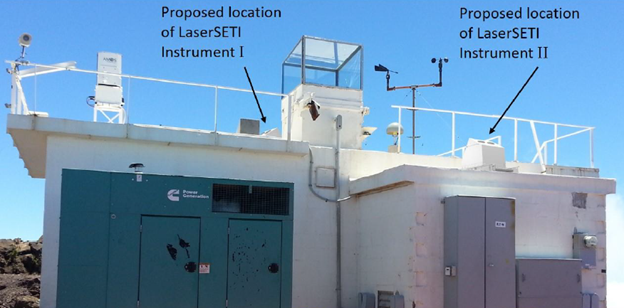
We’re working on the shipping and final installation details now, but the good news is at least Hawaii’s mandatory 2-week COVID quarantine can now be bypassed with a negative rest result within 72 hours of flight departure. As it stands, we’re shooting for First Light to happen before the end of this year! It is 2020, though, so I would hold off ‘cashing that check’ until installation actually happens!
As usual, we’ll have a lot more to talk about in our next installment, probably 4 to 6 weeks from now, and I think you’ll find it worth the wait. As always, thanks so very much for all your support!